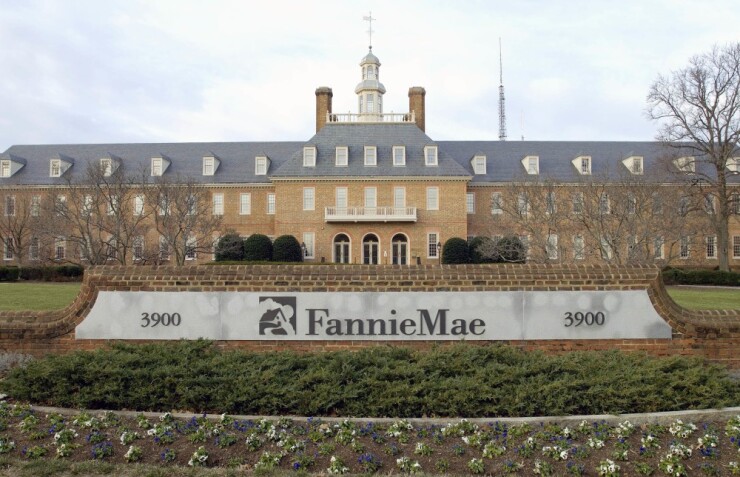One of the chief considerations in reforming the government-sponsored enterprises Fannie Mae and Freddie Mac is the need for capital. As long as the GSEs exist, they must have adequate capital so taxpayers will never again be compelled to help them meet their financial obligations. If the GSEs were shut down, there would have to be adequate pools of private-sector capital to ensure continued stability and liquidity in the mortgage market.
The
The Blueprint accepts the reality that large banks, mortgage insurers and other sources of capital cannot replace Fannie and Freddie. Accordingly, rather than try to create a new, elaborate and untested secondary mortgage market architecture, the proposal envisions using the current de-risked, slimmed-down and better-regulated GSEs with strong capital reserves appropriate for the post-financial-crisis era.

Fannie and Freddie are now in the ninth year of a government-run conservatorship that was supposed to be temporary. With the infusion of $187 billion of temporary capital from taxpayers during the 2008-9 financial crisis, the GSEs were stabilized and returned to profitability.
However, with an amendment to the terms of the conservatorship in 2012 that is commonly referred to as the Net Worth Sweep, Fannie and Freddie have been required to send their respective earnings and accumulated capital reserves to Treasury each quarter. These dividend payments now exceed an impressive $265 billion but have left Fannie and Freddie with zero reserves against future losses.
The Blueprint envisions the U.S. Treasury retaining these receipts and then raising an additional $75 to $100 billion through the Treasury’s exercise of the warrants it holds for 79.9% of common stock of Fannie and Freddie. There is strong precedent for this based on how Treasury dealt with AIG and Ally Financial. With retained earnings, financial support from existing shareholders and sales of new stock into the markets, the Blueprint lays out a realistic path to raise up to $180 billion in core capital to support Fannie and Freddie going forward and to scale back the government’s support.
Importantly, the Blueprint also includes a three-pronged approach to establish minimum capital requirements that are approximately four times the GSEs’ pre-crisis requirements and are consistent with rules under which other large financial institutions operate as a result of post-crisis law and regulation. The Blueprint also applies the single most important lesson of the financial crisis: All financial institutions need capital and systemically important ones need even more capital, so taxpayers are protected from bailouts.
To date, many private-sector stakeholders and members of Congress have been resistant to this lesson in the context of Fannie and Freddie. The GSEs’ capital is down to fumes and another draw on public funds could happen in any upcoming fiscal quarter. Nonetheless, Sen. Bob Corker, R-Tenn., who has for years spearheaded efforts to eliminate Fannie and Freddie and replace them with a new housing finance vehicle,
Now that Fannie and Freddie have accelerated the payback to the Treasury of the initial $187 billion and added an additional $80 billion to government coffers, we can build substantial amounts of first-loss private capital, mostly though current GSE shareholders. The Blueprint lays out concrete steps to accomplish this. The plan envisions an explicit government backstop remaining only for truly catastrophic circumstances. But the level of that backstop could be wound down with strong capital reserves, credit risk sharing, more responsible lending practices, and other reforms the FHFA has implemented in recent years. The government would step out of its oversize, everyday role in the mortgage market for good.
One final feature of this Blueprint is that it can be implemented by the FHFA and Treasury in just four years using existing statutory authority. While Congress has a vital role in developing broader changes to housing finance and regulatory policy, this Blueprint requires no new legislation.
After nine long years of Fannie and Freddie twisting slowly in the wind, it is possible that a simple solution, which is easy to understand and implement, is finally at hand.





